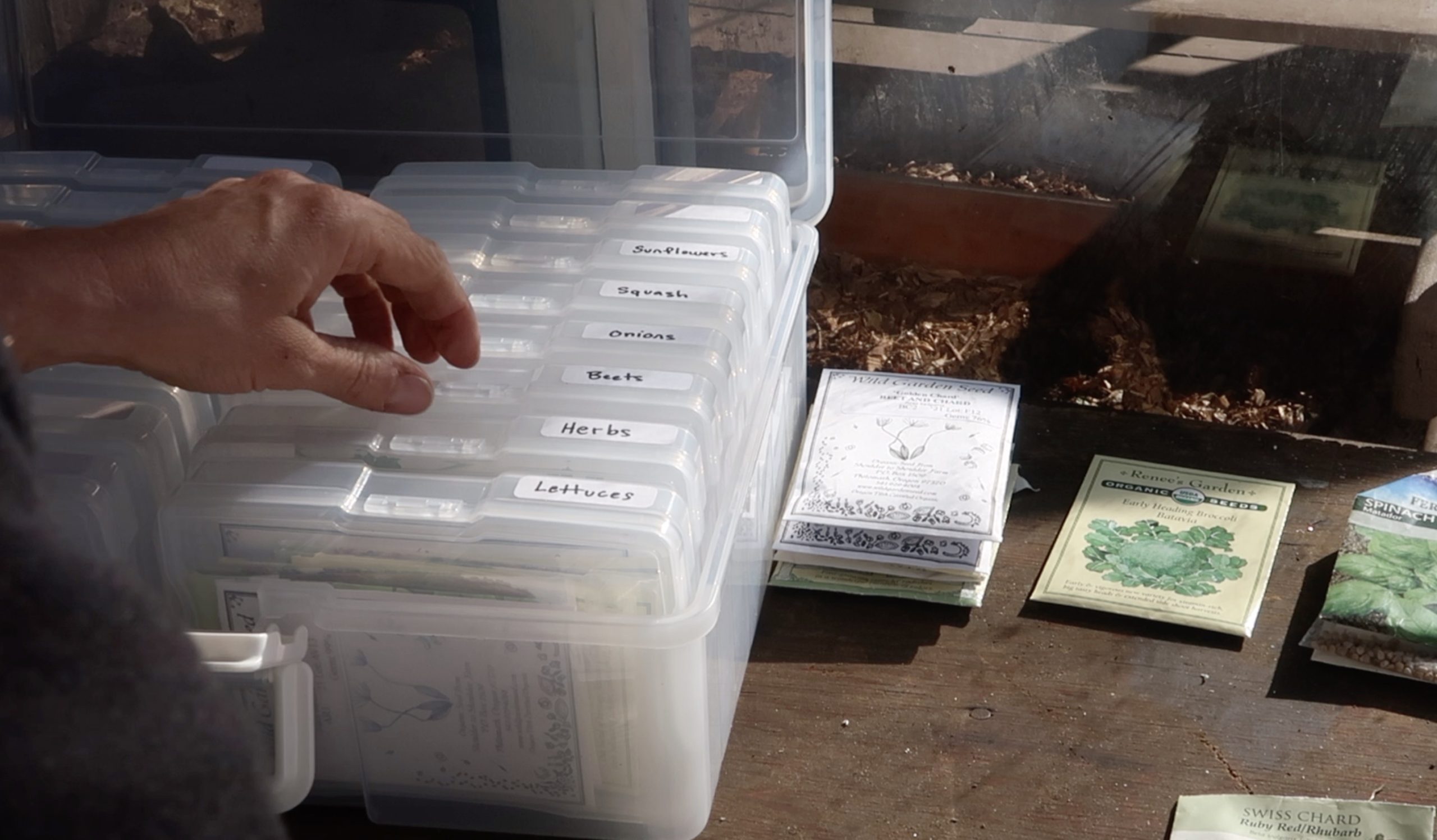Bless my husband’s patient heart. It’s been a long road of jars, bags, and piles of seeds laying all around our homes throughout the years. However, I have finally found a phenomenal way to take care of these life containers. Today I am sharing with you the best way to easily organize and store seeds! Let’s also dive into ideal storage locations & seed expiration dates.
Seed Organization & Storage Materials
While in the past I’ve sorted seeds through using recycled cardboard and a shoebox, I always still ended up with a piled mess. Furthermore, I’m at the point where I’ve collected so much seed, I needed a new system. Using this picture box system is truly the best way to organize and store seeds! Here’s what you need:
The Process
You will be SO HAPPY once you have put in place this effective and efficient seed organization system. We first discovered this idea through the wonderful and talented Deanna of HomesteadandChill.com. Here’s the easy steps to do so:
1) Sort
Find all those seed packets laying around and sort them into categories. If I have a lot of a specific type of seed (ie. such as a ton of lettuce varieties), I dedicate one picture box to them. But for seeds like tomatoes and peppers, where I only have a couple packets, I’ll clump them together. The best part is no label is permanent and can be removed or have another label stuck over it in the future.
For seeds I collect from our yard, I make our homemade seed packets. Click here to learn how to do this too!
Lastly, one important tip for your open seed packets – make sure to use blue tape to seal them shut so that you do not have seed spill into your photo containers! You’re welcome. 😉
2) Label
Using these adhesive labels, you can quickly stick and label the categories you came up with to place your seeds in each photo container. The best part, the labels easily come off when you need to change what a container holds!
3) Store
Store your seeds safely in a space where temperature does not vary daily. Let’s dive into that more below.
Finally, when it is time to start growing, make sure to provide your seeds the ideal growing conditions to do so! Get our Grow From Seeds How-to Guide FREE when joining our email community where I share a monthly newsletter with reminders & tips for your garden.
Ideal Storage Locations
When it comes to seed storage, the ideal temperature is between 32-41 degrees Fahrenheit. Consequently, your fridge would be the best place to store your seeds if this is possible for you.
For most of us, the fridge may already be packed with food for the family and therefore will not be ideal for a huge box of seeds. If this is the case for you as well, find a dark, cool place in your home where the temperature changes minimally throughout the day.
For example, in our home, there is a linen closet in the middle of the house, far away from any heaters or windows. I tuck our seed box in the bottom of this closet, a secret hiding place for our most prized possessions.
What about Seed Expiration?
Lastly, I want to share some thoughts on seed expiration. If you are up for saving your seeds each year, this is an ideal way to have seeds thrive in future growing seasons. However, for those who do not have the time or knowledge yet to do so, getting local, organic seed packets is a phenomenal resource. Join our once a month email newsletter for recommendations on phenomenal seed companies we highly recommend.
When it comes to seeds expiring, different seeds have different shelf lives. Here’s a breakdown of how long a few types of common seeds last (learned from master gardener, Erin Mahaney).
- 1 year: onions, parsnips, parsley, salsify, and spinach
- 2 years: corn, peas, beans, chives, okra, dandelion
- 3 years: carrots, leeks, asparagus, turnips, rutabagas
- 4 years: peppers, chard, pumpkins, squash, watermelons, basil, artichokes and cardoons
- 5 years: most brassicas, beets, tomatoes, eggplant, cucumbers, muskmelons, celery, celeriac, lettuce, endive, chicory
There you have it. I hope this helps as you organize and store your seeds in preparation for this upcoming year! Let us know any questions you have in the comments below. And as always, enjoy your growth with gardening.
*This post contains affiliate links. Thank you for your support.


